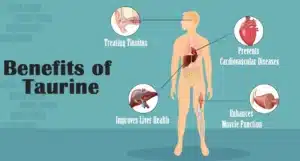Tinnitus, or ringing in the ears, is an often debilitating condition with no approved treatment or cure. Some sufferers, however, may find relief from low-level infrared light therapy, according to a new peer-reviewed, first-of-its-kind study published in the Journal of Personalized Medicine.

Over four weeks, researchers evaluated treatment for tinnitus in more than 100 men and women aged 18 to 65 whose condition either had an unknown cause or had been unresponsive to treatment and divided them randomly into 10 groups. Researchers investigated personalized treatment options involving low-level laser therapy (LLLT) using red and infrared light in the inner ear or cochlea, where tinnitus often occurs, and LLLT combined with other treatments, such as vacuum therapy and drug therapy.
LLLT uses a narrow spectral width of light close to infrared to promote tissue regeneration, reduce inflammation, and relieve pain. Whereas a high-powered laser is used to cut and destroy tissue, low-level near-infrared light penetrates more deeply than ultraviolet or visible light and does not harm living tissue, according to a study published in Medical Lasers.
The study assessed both red light and infrared light laser therapy. Red light is visible and uses wavelengths of 630 to 700 nanometers (nm). Infrared light, at wavelengths from 800 to 1,000 nm, is invisible and penetrates farther into the body.
Treatments evaluated included the following:
- LLLT modalities using only light.
- LLLT combined with vacuum therapy, ultrasound, Ginkgo biloba tablets—an herb commonly used for vertigo and tinnitus caused by circulatory disorders and lack of blood flow to the brain—or a drug used to treat dizziness, vertigo, and migraines called flunarizine dihydrochloride.
- Laser acupuncture (LP)—a specific type of LLLT that uses nonthermal, low-intensity laser irradiation to stimulate traditional acupuncture points.
- Treatment with only flunarizine dihydrochloride.
- Treatment with only ginkgo biloba.
LLLT using infrared wavelengths was superior to the placebo, and lasting therapeutic effectiveness was also observed 15 days post-treatment with LLLT, LP, and light therapy combined with other treatments. Researchers also observed that the most effective treatment was when light therapy sessions focused on the cochlea and middle ear were increased from six to 15 minutes.

